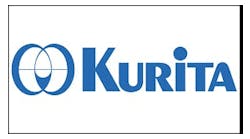Federal government to fund water reuse projects for Western states
The WateReuse Association applauded U.S. Secretary of the Interior Sally Jewel’s announcement that the federal government will invest $50 million 12 Western states for water reuse and conservation projects. The funding comes from the Bureau of Reclamation’s WaterSmart program, which has supplied approximately $250 million in funding since 2010. Supporting the Western U.S. in meeting water supply needs, the Interior’s Bureau of Reclamation will continue to have a “backlog of water reuse projects in need of funding support,” even with the recent investment announcement. Furthermore, many communities outside of the Western region, which are outside of the purview of the bureau, are in need of funding to develop resilient water supplies to withstand drought, population growth, climate change and other factors.
EPA and U.S. Army finalize the Clean Water Rule
The U.S. Environmental Protection Agency (EPA) and the U.S. Army finalized the Clean Water Rule on May 27 to protect the streams and wetlands that form the foundation of U.S. water resources from pollution and degradation. This new rule ensures that waters protected under the Clean Water Act are “more precisely defined and predictably determined,” making permitting easier, less costly and faster for industries and businesses. Grounded in law and the latest science, the Clean Water Rule is shaped by public input. The rule maintains all previous exclusions and exemptions and does not create any new permitting requirements for agriculture. Approximately 117 million Americans, or one in three people, get their drinking water from streams that lacked clear protection before the Clean Water Rule.
Local agencies begin statewide mandate implementation
California water agencies were required to achieve state-mandated water-use targets by June 1. Homes and business will now need to limit irrigation with potable water to two days or less per week. San Diego Water Authority members must reduce usage by 12 to 26 percent compared to 2013 water use levels. The State Water Resources Control Board adopted the emergency measures on May 5, and the reduction targets will be in place through February 2016. Many of the Water Authority’s 24 members have set the allowed watering dates and times, while others are working on it. This will help agencies to avoid state fines as they work to meet their targets. The Water Authority has worked to increase conservation and outreach efforts by $1 million. It has created a partnership with the San Diego Chapter of the California Restaurant Association as well as the Food & Beverage Association of San Diego to remind customers about the effort.
Duke Energy subsidiaries plead guilty to Clean Water Act violations
Three subsidiaries of Duke Energy Corporation, the largest utility in the U.S., pleaded guilty to nine violations of the Clean Water Act at several of its North Carolina facilities. Duke Energy agreed to pay a $68 million criminal fine as well as spend $34 million on environmental projects and land conservation to benefit North Carolina and Virginia wetlands and rivers. Four of the charges are the direct result of the coal ash spill in February 2014 from the Dan River steam station into the Dan River near Eden, North Carolina. As the scope of the investigation expanded, the remaining violations were discovered on allegations of historical violations at Duke Energy’s other facilities. Duke Energy Carolinas and Duke Energy Progress must certify that they have reserved “sufficient assets to meet legal obligations with respect to its coal ash impoundments within North Carolina” under the plea agreement, and these obligations are estimated to be around $3.4 billion.
High temperatures a major player in California drought
A recent study by the U.S. Geological Survey and university partners showed that abnormally high temperatures have greatly contributed to one of California’s worst droughts in history. Record low precipitation has been the key player in the current drought, but researchers determined that the winter snowfall would have had a significantly greater impact if air temperatures had been lower and closer to the 1916-2012 average. The spring-summer runoff would have been higher, and the spring-summer soil moisture deficits would have been smaller. Lead study author Shraddhanand Shukla of the University of California – Santa Barbara (UCSB) compared climate data from water year 2014 to similar intervals during 1916 to 2012. The research led to implications for higher temperatures on the environment, though it does not directly address long-term climate change.
Turtle deaths blamed on waterborne toxins
Scientists believe waterborne toxins are the cause of the deaths of more than 200 diamond terrapin turtles that have washed up in record numbers on Long Island recently. The cause of the deaths is not completely clear, but necropsies “point to saxitoin, a biotoxin produced in [algal] blooms that has been found in the water at 10 times the normal level.” The poison can become concentrated in shellfish, which are then eaten by turtles. Stony Brook University School of Marine and Atmospheric Sciences Professor Christopher Gobler explained that saxitoin is common in the area’s waters, but this occurrence is unusually high. The contaminant is caused by red algae blooms. Saxitoin is a dangerous neurotoxin that causes paralysis and death in animals that eat it. Humans can also be affected, but most recover in a few days. The New York State Department of Environmental Conservation has sent the turtles’ organs for further testing, and the results should be back in a few weeks. The damage done to the turtle population could take decades to recover.
EPA announces billion-dollar funding for Sacramento wastewater treatment plant upgrades
U.S. Environmental Protection Agency (EPA) Regional Administrator Jared Blumenfeld announced a record $1.6 billion in Clean Water Act State Revolving Funds — the largest single block of financing ever issued — to upgrade the Sacramento Regional Wastewater Treatment Plant. The funding was announced during Blumenfeld’s visit at the recent groundbreaking event for the treatment plant in Elk Grove, California. The upgrade project will bring the plant to advanced treatment levels, removing around 95 percent of ammonia from wastewater discharges to protect the Sacramento River and the San Francisco Bay Sacramento-San Joaquin Delta Estuary. The Bay Delta supports more than 750 animal and plant species and is also the hub of California’s water distribution system, providing drinking water to 25 million people and irrigation water to four million acres of farmland. Dubbed the EchoWater Project, the construction of the Sacramento Regional Wastewater Treatment Plant upgrade is expected to cost about $2 billion and will take place over eight years.
WateReuse board of directors approves funding for new research projects
The WateReuse board of directors approved the funding of 13 research projects valued at around $6 million. The projects encompass a wide range of issues designed to improve the acceptance, treatment and distribution of recycled water. Nine of the projects are funded under the WateReuse Research Foundation’s Principal Program, meaning research contractors will be selected through a competitive process. The four remaining projects are funded under the Tailored Collaboration (TC) program, which will permit WateReuse Research Foundation members to propose and receive funding for research. WateReuse is investing $460,000 in the TC projects and $1.5 million in the Principal projects, and the funding’s balance is from in-kind support, with eight of the projects funded through the Direct Potable Reuse Initiative — an ongoing effort to advance direct potable reuse as a water supply option. A technical peer review committee will be established for each new project, and requests for proposals will be released later in the year for the Principal projects.
PEOPLE
Hellenbrand Inc. named Ed Motiff as the regional sales manager of the Western U.S. region. Motiff will provide ongoing support to Hellenbrand’s current dealer base as well as focus on new business development. He has 12 years of industry experience including customer service, commercial and residential production and he is WQA-CWS IV certified. Hellenbrand is a family-owned business with more than 48 years of experience providing water treatment systems to an independent, national dealer base.
BWA Water Additives appointed Justin Penney as vice president of operations. In his new position, Penney will lead the global operations team. The team is responsible for maximizing gross profit and cash delivery by optimizing supply chain cost, meeting customer expectations and maintaining operational excellence. Penney has more than 20 years of experience in the chemical industry. His most recent position was global procurement director at Akzo Nobel.
Dr. Anahita Williamson, engineer with the Rochester Institute of Technology, was appointed director of the U.S. Environmental Protection Agency (EPA) Region 2’s Division of Environmental Science and Assessment. For the past six years, Williamson served as director of the New York State Pollution Prevention Institute at the Rochester Institute of Technology. She has helped more than 200 companies reduce manufacturing costs while reducing waste and make work environments cleaner and safer. In her new position, Williamson will oversee 65 employees who collect, analyze and evaluate data in support of EPA monitoring programs.


